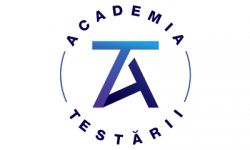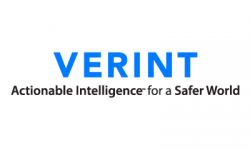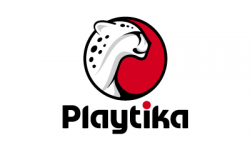Agenda
- Home
- Agenda
- AI & Machine Learning Nov 12, 2019
- QA & Testing Con Nov 13, 2019
- Security Con Nov 13, 2019
- Java Con Nov 14, 2019
Intro Speech
Welcome to the AI & Machine Learning Conference
-
 Alin Turcu
Mobile & AI Community Manager
at
Cognizant Softvision
Alin Turcu
Mobile & AI Community Manager
at
Cognizant Softvision
Building smarter solutions with no expertise in machine learning
ML? API? AutoML? What can we build in only a few hours or days? In this session, we'll see how to benefit from existing ML models and how to create a custom model with AutoML. We’ll also be active players of a live demo, so don't put your smartphone on airplane mode!
-
 Laurent Picard
Developer Relations
at
Google
Laurent Picard
Developer Relations
at
Google
Machine Learning at work in the real world
-
 Andrei Demit
.NET Software Developer
at
Cognizant Softvision
Andrei Demit
.NET Software Developer
at
Cognizant Softvision
MLSec and how your ML applications may be at risk
This talk will give listeners a deep understanding of machine learning adversarial examples. Similar to fuzzing, adversarial samples/examples exploit weaknesses in how input is processed. Adversarial Examples are an inherent weakness in almost every machine learning model. Come to this talk if you are interested in learning more about MLSec and how your ML applications may be at risk.
-
 Abraham Kang
CTO
at
GEEE
Abraham Kang
CTO
at
GEEE
The Secret to the Success of an AI Business
One of the most successful people in Romanian IT will share the key ingredients to launching an AI business and setting it on a path for success.
-
 Liviu Dan Dragan
Chairman
at
Druid SA
Liviu Dan Dragan
Chairman
at
Druid SA
Deploying optimized computer vision solutions on multiple platforms
This talk will cover development tools and examples for optimized computer vision and deep learning solutions running on the Cloud or on Edge devices
-
Silviu Tudor Serban Founder at Helios Vision
Reinforcement Learning for Engineers
We'll discuss the basic concepts of Reinforcement Learning, see it in context of other types of Machine Learning and analyse most popular use cases and applications. Target public - engineers with no previous knowledge of RL.
-
 Andrei Suiu
Data Scientist
at
Ness Digital Engineering
Andrei Suiu
Data Scientist
at
Ness Digital Engineering
The Future of Machine Learning – Is Winter Coming?
Join me in this exploratory foray into the future perspectives of Machine Learning to gain a better understanding of what lies ahead in one of computer science’s most important and impactful fields.
“Clouded this boy’s future is” are some of Sci-Fi cinematography’s most famous words that could be applied to describe the current state of Machine Learning. On the one hand, there are spectacular improvements and new developments, practical results, and effects that are already profoundly transforming our lives. On the other hand, significant challenges are starting from sheer computing power availability and ending with serious ethical problems.
We’ve seen in the history of computer science two major AI winters already and several smaller episodes as well. The merits and advantages of modern Machine Learning are beyond and doubt and undeniable. But history teaches us that every period of a boom is inevitably followed by one of demise.
Will history’s cycle be broken this time? Will we be able to harness the immense power of Machine Learning to do good? Will we be successful in overcoming challenges like adversarial attacks, data poisoning, bias, lack of enough computing power, and many more?
-
 Ciprian Jichici
CEO
at
Genisoft
Ciprian Jichici
CEO
at
Genisoft
QuickFire Special Intro
-
 Florin Manolescu
Senior Consultant & Managing Partner
at
Academia Testarii
Florin Manolescu
Senior Consultant & Managing Partner
at
Academia Testarii
Faster, Cheaper, Leaner: Horizontally Scaling a... CI Pipeline
We all know CI should be done by the time we’ve made ourselves a cup of coffee. What we don’t always know is how to do that, especially when a single run takes hours or days. In this talk we will walk you through how we made that happen, by horizontally scaling the CI workload for Red Hat 3scale.
-
 Yorgos Saslis
Software Delivery Engineer
at
Red Hat
Yorgos Saslis
Software Delivery Engineer
at
Red Hat
Mental Models: Figuring out how life and software work
We make decisions every day, every hour and every minute. They affect every aspect of our life, from how we eat to how we work and even who we make friends with. But do you really know why you make those decisions ?
On what assumptions do you decide if something is true or not ? And how does the answer to these questions help you in testing? Join me in this short talk to find out what mental models are and how can they answer all the above questions.
-
 Stefan Bratosin
QA Analyst
at
ING
Stefan Bratosin
QA Analyst
at
ING
How King uses AI to test Candy Crush Saga
Candy Crush Saga is one of the biggest mobile games today that has been around for over 5 years. It is increasingly a challenge to test a game that has technical debt combined with new features being added for millions of players. Alexander Andelkovic shows you how King is training artificial intelligence (AI) programs (bots) to test its games by mimicking human players.
Join Alexander as he discusses how King is taking testing to the next level by using machine learning to train bots to test and evaluate game feature in an unsupervised scalable way. He discusses ways to extend and use AI bots to test parts of code that normally is a challenge to tackle as human tester. Alexander explains how this AI approach can be generalized to test other applications. Learn how AI can help you with testing that’s getting very difficult to master with traditional testing techniques.
-
 Alexander Andelkovic
Senior Agile Testing Lead
at
King
Alexander Andelkovic
Senior Agile Testing Lead
at
King
Future of Testing
Development practices have tried to replicate, in the past, manufacturing practices. With all the digitalisation that pushed forward the IT industry, can we still have a look at manufacturing, to understand what will be the future of testing?
-
 Florin Manolescu
Senior Consultant & Managing Partner
at
Academia Testarii
Florin Manolescu
Senior Consultant & Managing Partner
at
Academia Testarii
Just watch and let monkeys test for you
Following an unscripted test path, an exploratory session is always good to identify crashes, hangs or less obvious bugs. The more exploratory testing you do, the better, since your chances of finding a great bug increase. But we don’t really have the time or manpower to do a lot of exploratory testing. In addition, since testers have to sleep and eat as well, we can’t run uninterrupted test sessions for days on end. Still, maybe you wondered fearfully how your app would handle hours long, even multiple days long of continuous usage.
Following an unscripted test path, an exploratory session is always good to identify crashes, hangs or less obvious bugs. The more exploratory testing you do, the better, since your chances of finding a great bug increase. But we don’t really have the time or manpower to do a lot of exploratory testing. In addition, since testers have to sleep and eat as well, we can’t run uninterrupted test sessions for days on end. Still, maybe you wondered fearfully how your app would handle hours long, even multiple days long of continuous usage.
Enter Monkey, https://github.com/cbalea/monkey. This open source tool was designed to hunt for crashes. It can exert the app under test for a long period of time - in theory, forever - serving as a stress testing tool as well. Like a monkey, it goes randomly through all of the screens and stops when the app cannot be interacted with anymore, or when the time runs out. This session will present the concept of exploratory testing, why it’s hard to automate and how the Monkey tool solves this problem.
It will include a live demo as well.
- you will understand the basics of exploratory testing
- you will understand why exploratory testing is hard to automate
- you will meet Monkey, the automated exploratory testing tool
- you will understand how Monkey thinks and acts
- you will be able to apply the concepts behind Monkey to any software project
-
 Ciprian Balea
Scrum Master and Senior QA Automation Engineer
at
Toptal
Ciprian Balea
Scrum Master and Senior QA Automation Engineer
at
Toptal
How AI can be used to improve QA
AI is becoming more and more accessible and you no longer have to use specialized tools in order to leverage it. You can now, more than ever, easily use open-source libraries and create your own ML/AI models and use them in your day-to-day job. In this presentation we will quickly go over several applications based on ML that can be easily built and used to improve your work as a QA.
-
 Eduard Mirescu
QA Automation Architect
at
Deutsche Bank
Eduard Mirescu
QA Automation Architect
at
Deutsche Bank
5 reasons why you shouldn't be a test manager
This presentation does not want to focus on the "bad" of test management but wants, through the reasons I will present, to inspire/teach others to thrive as test managers, appreciate more the test managers they worked with and to focus on remaining relevant in their preferred role and becoming better at it, since test management is not necessarily the ultimate finish line even in many cultural settings this is the ultimate goal.
-
 Andrei Pirvulescu
Tester & Co-founder
at
Qteam Software Solutions
Andrei Pirvulescu
Tester & Co-founder
at
Qteam Software Solutions
State of cybersecurity 2019 - a snapshot of cybersecurity from the perspective of cybersecurity managers and practitioners
-
 Gratiela Magdalinoiu
President
at
ISACA Romania
Gratiela Magdalinoiu
President
at
ISACA Romania
Stopping Cyber Boom
Whenever a user creates a loss, the security profession takes the position that it was an unaware user and the solution is more awareness training. This position is not just specious and too simplistic, it doesn't include the potential for malice and countless other issues. The reality is that the user is just part of a system. Adopting principles from safety science, counterterrorism, and accounting, this presentation shows how to holistically account for what results in 90% of all losses.
-
 Ira Winkler
President
at
Secure Mentem
Ira Winkler
President
at
Secure Mentem
Harness Technologies to Prevent Terror and Crime
Part of today’s cyber
landscape involves constant interaction with people - in doing this, we
leave our online history behind, our unique digital footprint. Verint’s technologies analyze massive network
and web-data to reveal the footprints of illicit activities such as crimes,
terror and cyber threats among all of Big Data in motion.
So, what technologies do
you harness to identify terrorists and criminals out of millions
of data sources - generating terabits of data per second in every
application and protocol?
-
Yuval Wilf R&D Senior Director at Verint
The parts of JWT security nobody talks about
JSON Web Tokens (JWT) have become the de facto standard to transfer application claims between the client and the server. By design, they incorporate the use of signatures to ensure the integrity of the data. However, merely signing the data alone is not enough to guarantee security.
In this talk, we zoom into the security properties of JWTs. After introducing the different signature schemes, we dive into the hard parts nobody talks about. How do you manage and identify the keys used for the signature? How do you handle key rotation? And what about encrypting JWTs? This talk answers all these questions. You will walk away with a set of best practices for adequately securing JWTs.
-
 Philippe De Ryck
Google Developer Expert
at
Founder of Pragmatic Web Security
Philippe De Ryck
Google Developer Expert
at
Founder of Pragmatic Web Security
Let's talk about Advance Persistence Threats: Up your Threat Intel game
-
 Dan Demeter
Security Researcher
at
KASPERSKY LAB ROMANIA
Dan Demeter
Security Researcher
at
KASPERSKY LAB ROMANIA
One Phish Two Phish Red Phish Blue Phish
Society is changing, consumers are learning the value of their personal data, and will actively avoid organisations that do not treat their information accordingly. Words alone, are simply not enough. So how, when things feel more like they fail by design, can you improve your ability to protect your critical data? We often say that effective cyber security cannot exist without strong human firewalls. The same holds true for cyber security teams.
The most effective cyber security functions hold one thing in common, and it is not cutting-edge technology. Its high performing teams with a diverse set of talents. In this talk Zoë Rose covers the importance of varied skills and expertise when it comes to effective cyber resilience, incident response and innovation. Along with the fabulous foundations of a strong security programme.
-
 Zoë Rose
Hands-on cyber security specialist & Ethical Hacker
at
Baringa Partners
Zoë Rose
Hands-on cyber security specialist & Ethical Hacker
at
Baringa Partners
Why do most of the SOC projects fail?
Building a Cybersecurity Operations Center it’s an objective for a large number of companies around the world, but it seems that a lot of projects in this area are failing to fulfill initial expectations. We’ll use this session to discuss about some of the most common reasons the SOC projects are unsuccessful (things to avoid) and to present a few tips and tricks aimed to increase the success chances (things to do).
-
 Catalin Patrascu
Manager, Security Operations and Engineering
at
Aera Technology
Catalin Patrascu
Manager, Security Operations and Engineering
at
Aera Technology
The use of AI for CyberDefense
Name it, and it’s connected! Meet the modern enterprise: from the serves in the datacenter or cloud, to the laptop of the CEO, to the smartphone of new hire, to the Air Conditioning, to the assembly line, to the MRI machine or to the system irrigating the plants, everything is connected!
The common denominator of all devices in the enterprise environment is the network traffic, making network-centric security the most effective approach in defending modern heterogeneous enterprise environments. We will explore how applying machine learning to network traffic enables network traffic security analytics solutions to improve detection of advanced threats that might target the entire range of network-connected devices.
What you will take-away from this session:
• Why network centric security is the most effective approach in defending modern heterogeneous enterprise environment
• Content analysis vs network flow analysis
• Semi-supervised learning vs supervised and unsupervised machine learning
• Specialized machine learning algorithms to improve detection of advanced threats
-
 Bogdan Carlescu
Lead Product Marketing Manager
at
Bitdefender
Bogdan Carlescu
Lead Product Marketing Manager
at
Bitdefender
Evolving Business Models of Cyber Criminals and The Industry Response
How end users utilise technology has changed radically in recent years. This has led to a change in aims, methods and technology used by cyber criminals. Changes in the cyber threat landscape have shaped the reaction by cybersecurity professionals, policy makers and product vendors. This talk aims to provide a critical analysis of the evolution of this landscape, how we got to where we are and where we will go from here.
-
 Paul Bradbury
Public Sector Networking and Security Specialist
at
Softcat plc
Paul Bradbury
Public Sector Networking and Security Specialist
at
Softcat plc
Building software or doing banking?
-
 Bogdan Pipernea
Head of IT
at
Raiffeisen Bank Romania
Bogdan Pipernea
Head of IT
at
Raiffeisen Bank Romania
Quarkus : Supersonic Subatomic Java
Come to this talk to learn about Quarkus, what it brings to the table and how you can get start started with it.
Java based software development has been a winning proposition for the past 20+ years, however, cloud native application development in the form of microservices and serverless apps are challenging the Java deployment model in terms of memory requirements and start up speed. Quarkus is a Kubernetes native Java stack that can tailor your application for Hotspot & GraalVM providing amazingly fast boot times and incredibly low RSS memory usage, making Java great again in this new Cloud Native Era.
-
 Dimitris Andreadis
Director of Engineering
at
Red Hat
Dimitris Andreadis
Director of Engineering
at
Red Hat
From Mainframe to NoSQL in real time with Apache Kafka
Using Apache Kafka in real time categorizing of banking transactions
*This talk will be delivered in Romanian
-
 Catalin Mocanu
Middleware Development Team Leader
at
Raiffeisen Bank
Catalin Mocanu
Middleware Development Team Leader
at
Raiffeisen Bank
-
 Sorin Popa
Senior Software Developer
at
Raiffeisen Bank
Sorin Popa
Senior Software Developer
at
Raiffeisen Bank
Hibernating in Spring: Unleash the Magic
The most popular Java Frameworks out there: Hibernate and Spring. Both rely on magic to make things *seem* simple to novices, but both also hide dark tenets that only the initiate will discover. When these two sorcerers work together, their spells are incredibly powerful.
This live-coding session will reveal the truth behind the magic at their integration points, discussing transaction propagation, Spring Data Jpa repositories, audit support, proxies, plus a few more aspects useful for any engineer interested to know what’s under the hood. Grab a coffee and join an entertaining, dynamic session full of jokes, metaphors, stickers and other goodies :)
-
 Victor Rentea
Independent Trainer & Lead Architect
at
IBM
Victor Rentea
Independent Trainer & Lead Architect
at
IBM
The road to the cloud: practical tips for modernizing legacy applications
The cloud, devops, ci/cd, microservices...really cool buzzwords. But most of us are struggling with old, legacy codebases that are fragile and rigid. We are in the trenches trying to meet deadlines and fix regression bugs. How can we get there?
The cloud, devops, ci/cd, microservices...really cool buzzwords. But most of us are struggling with old, legacy codebases that are fragile and rigid. We are in the trenches trying to meet deadlines and fix regression bugs. How can we get there?
In this lightning talk I want to share my hands on experience of modernizing legacy applications and making them suitable for the new age. You will learn practical tips on how to begin the transformation of your old codebase and make your software project more flexible, maintainable and able to efficiently run in the cloud.
-
 Dan Geabunea
Senior Developer
at
Ivanti
Dan Geabunea
Senior Developer
at
Ivanti
Yet another cloud native Java framework: Helidon
Come and learn about project Helidon which fulfills varying demands and can be your powerful tool to develop cloud native applications.
It's always a challenge to choose or even change a microservices framework which satisfies your requirements. Obviously it needs to have small footprint and fast startup time. However different developers have different requirements. Some of them prefer functional, reactive style of APIs with full control. Others don't want to live without IoC and prefer declarative style APIs like in JavaEE.
-
 Peter Nagy
Principal Product Manager
at
Oracle
Peter Nagy
Principal Product Manager
at
Oracle
(R)evolutions in Java on the client: desktop/mobile/embedded
Recent changes in the Java client landscape offer lots of opportunities. In this talk, we will discuss the evolutions in OpenJFX, how using Graal makes it easy to create self-contained client applications, and we will show how Java client apps using JavaFX can easily be deployed to iOS and Android devices.
-
 José Pereda
Software Engineer
at
Gluon HQ
José Pereda
Software Engineer
at
Gluon HQ





